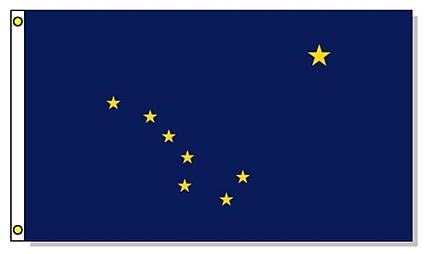The Alaska State Flag
I received numerous “astronomy lessons” from my dad when I was a younger boy. One of the first things he taught me, that I can recall, was about one particular star, called the “North Star” (also known as the “Pole Star”).
The North Star is a very prominent star that is approximately aligned with the Earth’s axis or rotation. It is a star whose apparent position is close to one of the “celestial poles,” and which lies directly overhead when viewed from the Earth’s North Pole.

The North Star (Polaris) as seen by the Hubble Space Telescope.
Interestingly, while other stars’ apparent positions in the sky change throughout the night, the North Star’s apparent position remains essentially fixed.
Now, the Alaska State Flag consists of eight gold stars, including the (bigger) North Star. The other 7 stars form the “Big Dipper.”
The Alaska State Flag was designed back in 1927, 80+ years ago, by Benny Benson, a 13-year old boy, native of Alaska, for a competition to create a flag for the then “Alaska Territory.” Till that time, Alaskans flew the U.S. flag since the territory was purchased from Russia in 1867.
There were over 700 submissions! To celebrate Benson’s achievement, he was awarded $1,000 and was given an engraved watch. He explained that for the design of the flag, he had looked to the sky for the symbols he included on his flag. Included with his submission was the following description:
“The blue field is for the Alaska sky and the “forget-me-not,” an Alaskan flower. The North Star is for the future state of Alaska, the most northerly in the union. The Dipper is for the Great Bear – symbolizing strength.“
The Big Dipper symbolizes a bear, an animal indigenous to the State of Alaska. As shown on the Alaska State Flag, the stars can be used as a guide to locate the North Star and determine true north, which, interestingly, varies considerably from a compass bearing in Alaska…

